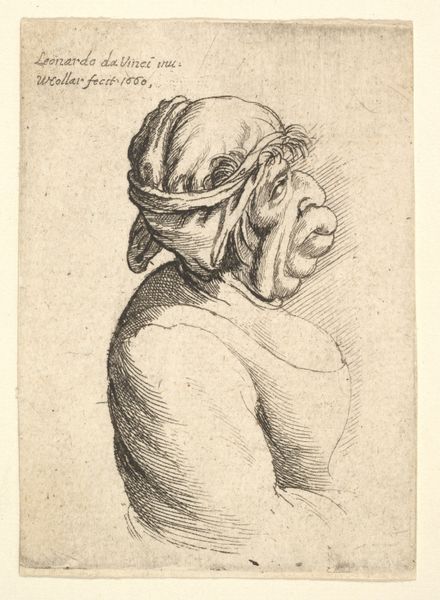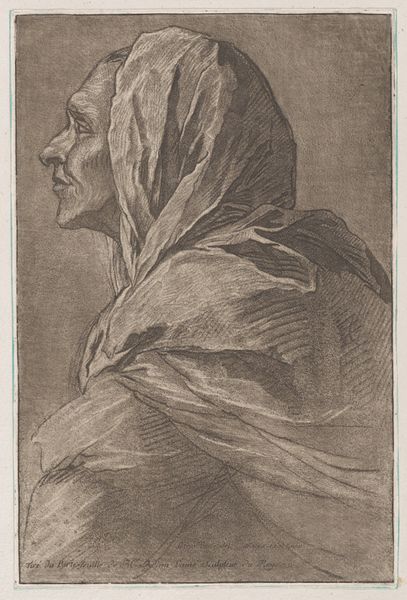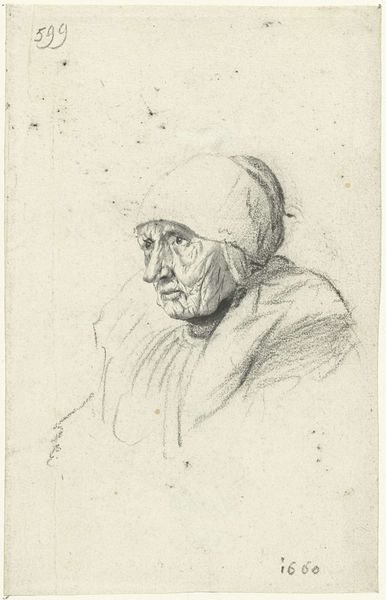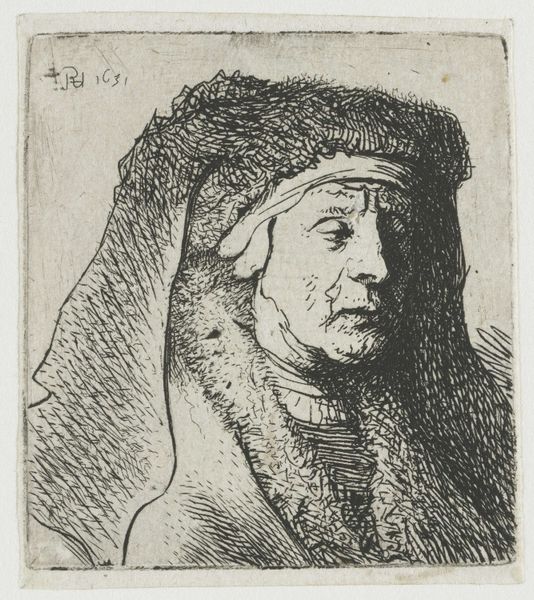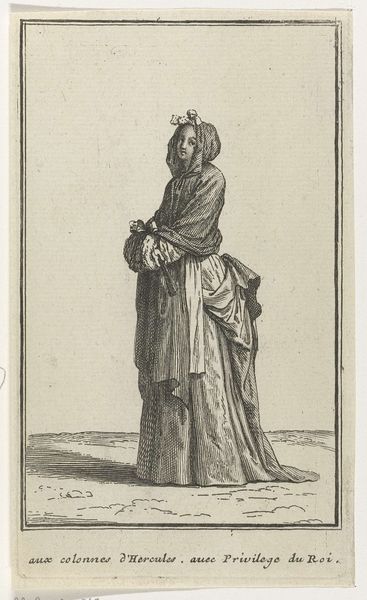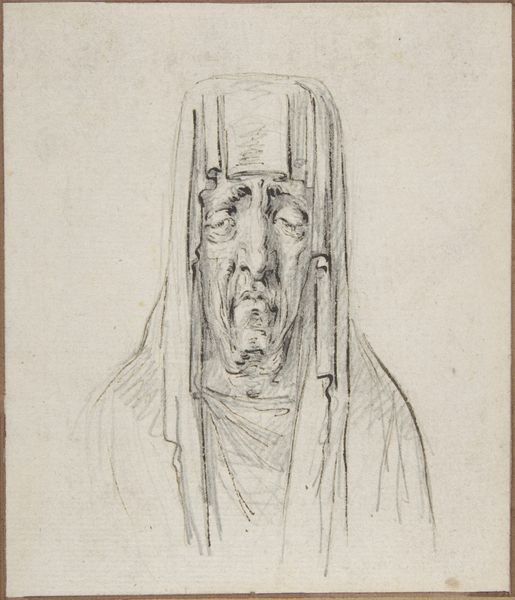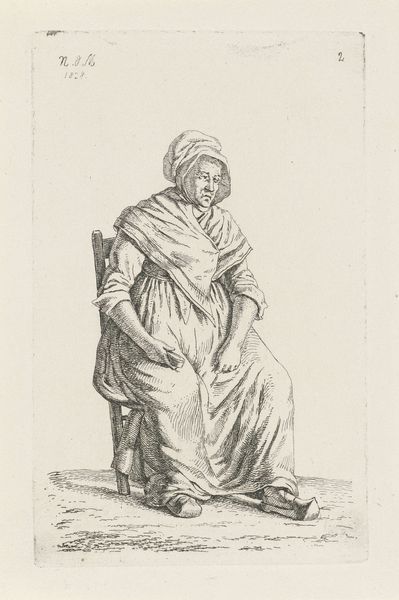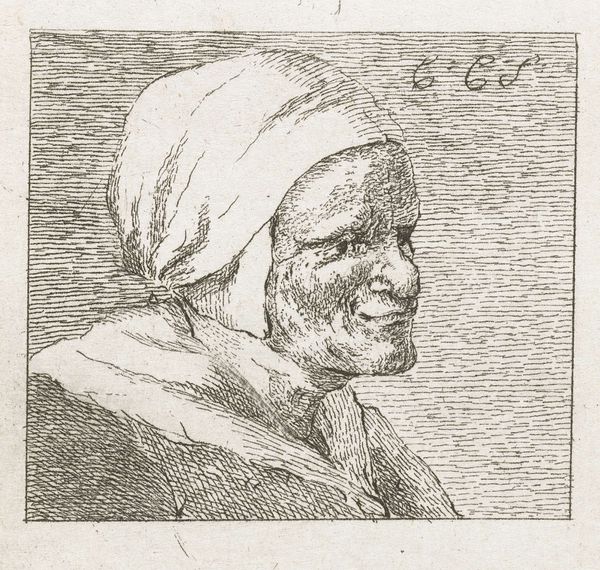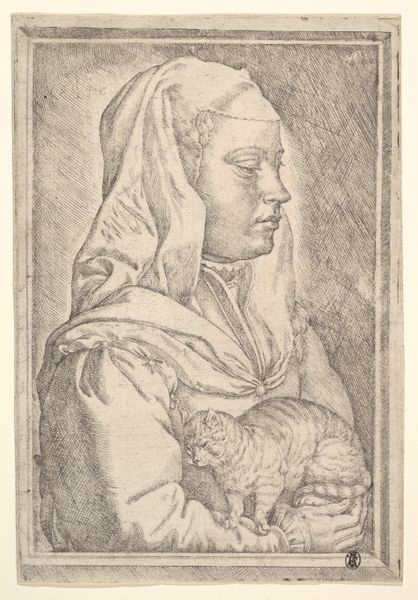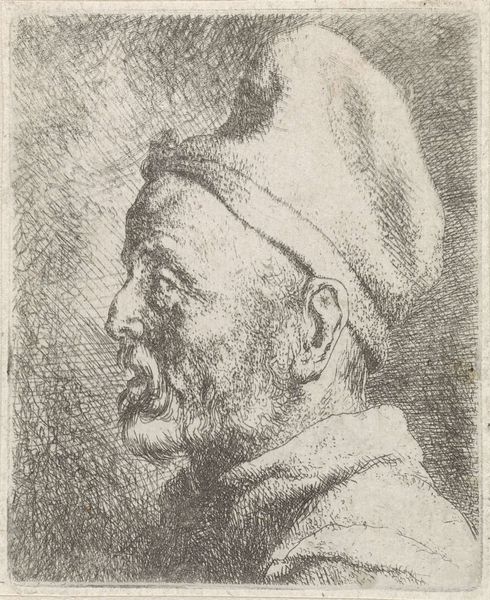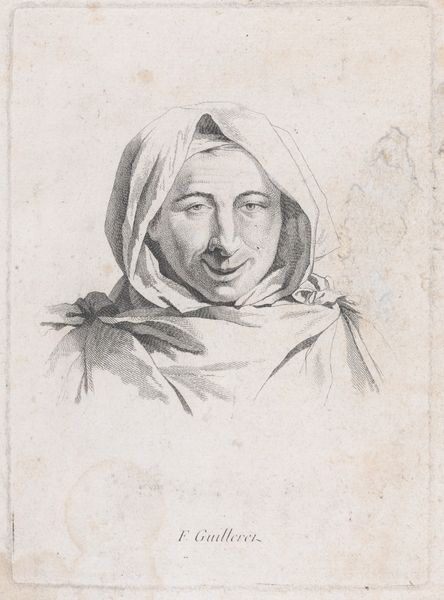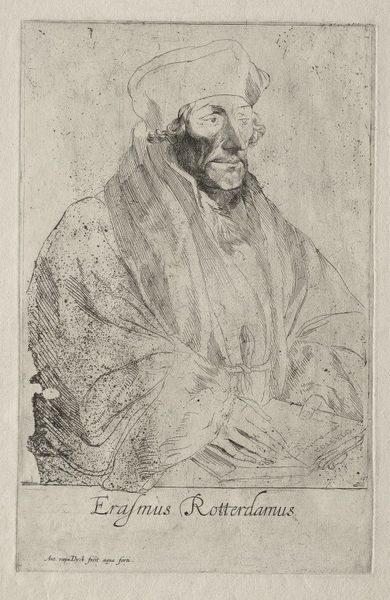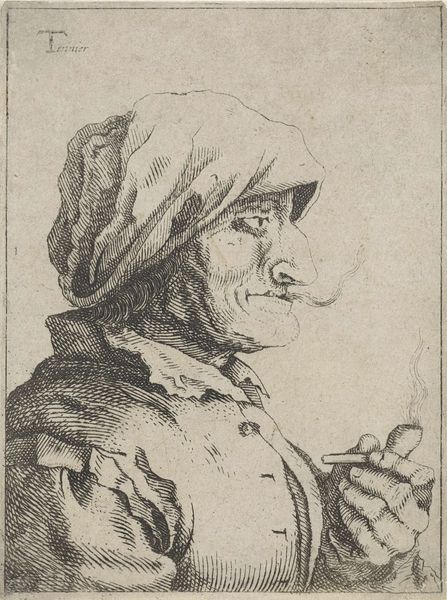
Bust of a man with a small turned-up nose and very high upper lip, wearing hood, in profile to the left 1666
0:00
0:00
drawing, print, engraving
#
portrait
#
drawing
#
baroque
# print
#
figuration
#
line
#
history-painting
#
engraving
Dimensions: Plate: 2 5/8 × 1 15/16 in. (6.7 × 4.9 cm) with thread margins
Copyright: Public Domain
Wenceslaus Hollar etched this bust in the 17th century, capturing a figure in profile with a distinctive hood. The hood itself, beyond mere head covering, speaks volumes. Think of the Phrygian cap, a symbol of freedom and revolution, worn by those who dared to challenge empires! Our figure's hood, while more modest, hints at a similar spirit of defiance or perhaps a retreat from the public eye. Consider how such head coverings recur throughout art history, from the veils of ancient priestesses to the cowls of medieval monks. Each iteration carries a weight of cultural meaning. In the Renaissance, hoods and hats denoted status, profession, or even hidden agendas, and we, as viewers, respond viscerally to these cues, subconsciously decoding the message. The emotional power of this simple form is immense. Like the cyclical nature of history itself, the hood's significance transforms, reappears, and evolves, forever embedded in our collective visual memory.
Comments
No comments
Be the first to comment and join the conversation on the ultimate creative platform.
